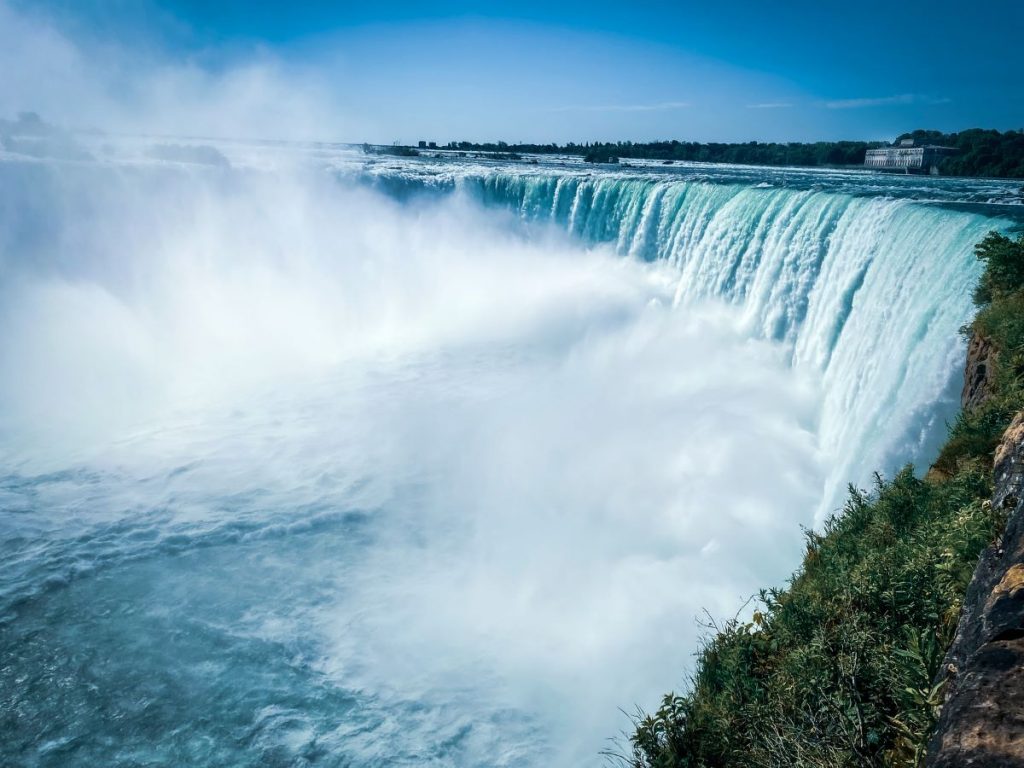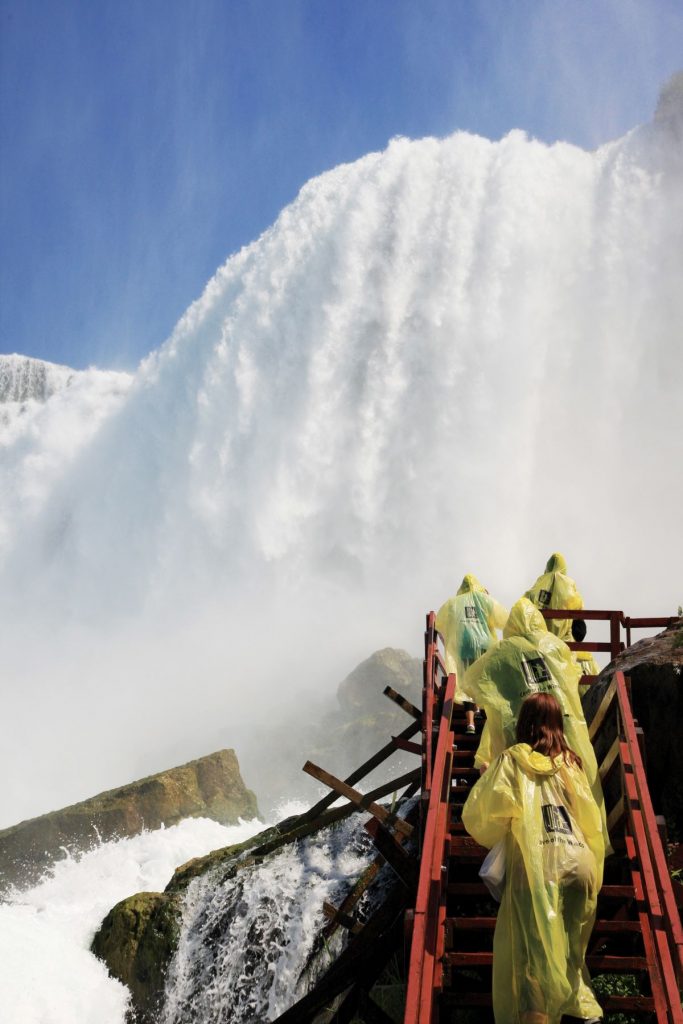Niagara Falls may be famous for its breathtaking beauty, but beneath the mist and roaring waterfalls lie facts that are just as fascinating as the falls themselves. In 1604, French-born Samuel de Champlain became the first European explorer to navigate the lake that would later be called St. Louis (and Ontario).
He later wrote “there was a fall about a league wide and a large mass of waterfalls into said lake: that when this fall is passed one sees no more land on either side but only a sea so large that they have never seen the end of it, nor hear anyone who has…”
Champlain was talking about what would later be called Niagara Falls, one of the most iconic cascades on the planet. The odd twist in all this is that Champlain didn’t actually see the falls. His fellow explorers did and he reported it.

The mysterious name
Whatever the case, these fast-moving falls have existed long before French explorers and their ilk showed up to pontificate about them.
There’s no consensus on where the name “Niagara” comes from, but some historians believe it hails from a Native-American word for “thundering water,” as the New York Times reported back in the 1920s. Other historians think the word is derived from the name of a local Native American tribe, the Niagagarega people, as has been listed on a handful of 17th-century European maps.
Aside from who did and did not see the falls and where the name comes from, there are many odd and unusual facts surrounding this great cascade. Here are a few odd and unusual facts about one of the world’s most wondrous waterfalls.

The great mid-18th-century freeze-up
On March 29th, 1848, several historical events occurred: John Jacob Astor, the first multi-millionaire in the United States (and distant ancestor to newsman Anderson Cooper), passed away. Across the Atlantic, Queens College in London was founded, the first school in the world to offer academic qualifications to women.
And back in the United States, Niagara Falls fully froze over for the first time in recorded history. Not only did the water come to a halt, but also several industries, such as factories and fisheries. So did the tourist industry at the falls that day. All in all, there was not a trickle of water for about 40 hours.
The falls have only frozen over one other time and that was in 1961. This time, though, it was intentional. The US Army Corps of Engineers froze up the American side of the falls to inspect possible erosion.

A barrel full of monkeys
Much has been made about the idea of going over the falls in the wooden barrel. The first person to do it was Annie Edson Taylor, a teacher from Michigan, who went over the falls on October 24, 1901. She survived but said this: “No one ought to ever do that again!”
No one listened to her, of course, and since then handfuls of fools in wooden barrels have attempted Annie’s cascade escapade, some have survived and some have not.
Tightrope walkers have also been lured to Niagara Falls:
- The first was Jean François “Blondin” Gravelet” who slowly but surely crossed Niagara Gorge on June 30, 1859. He enjoyed the stroll so much, he did it 8 more times during his life.
- The last one to do it was American daredevil Nik Wallenda who crossed over on June 5, 2012. Wallenda claims his 1,800-foot-long walk was the longest unsupported tightwire walk in history. He brought his passport with him, so he could present it to border officials on the Canadian side.
But perhaps most telling of all are the early adventure seekers:
- In Autumn 1829, an American man named Sam Patch thought it would be a good idea to jump from a tower overlooking the gorge and into the water. Patch survived and this set off the historic gravitational pull to do crazy things at Niagara Falls.
- In 1883, English-born Matthew Webb, who was famous for being the first person to swim the English Channel, and thus confident when it comes to being in the water, attempted to swim the rapids down river from the falls—not the most hair-raising stunt. He drowned.

The honeymooners … and much, much more
Niagara Falls has long been known for two things in popular culture: the lure of daredevils to do something crazy at the falls (see above). And the classic destination for newly married couples to go on their honeymoon.
But Niagara Falls has consistently captured the pop culture imagination. For example, it has played parts in the films Superman II, Bruce Almighty, and the Social Network.
It even appeared in Peter Jackson’s Lord of the Rings: The Fellowship of the Ring; in the film, there’s a scene in which Boromir’s boat is going over the Falls of Rauros. Rather than using CGI for the falls, Jackson used aerial stock footage of Niagara Falls instead and later added the boat via CGI.





